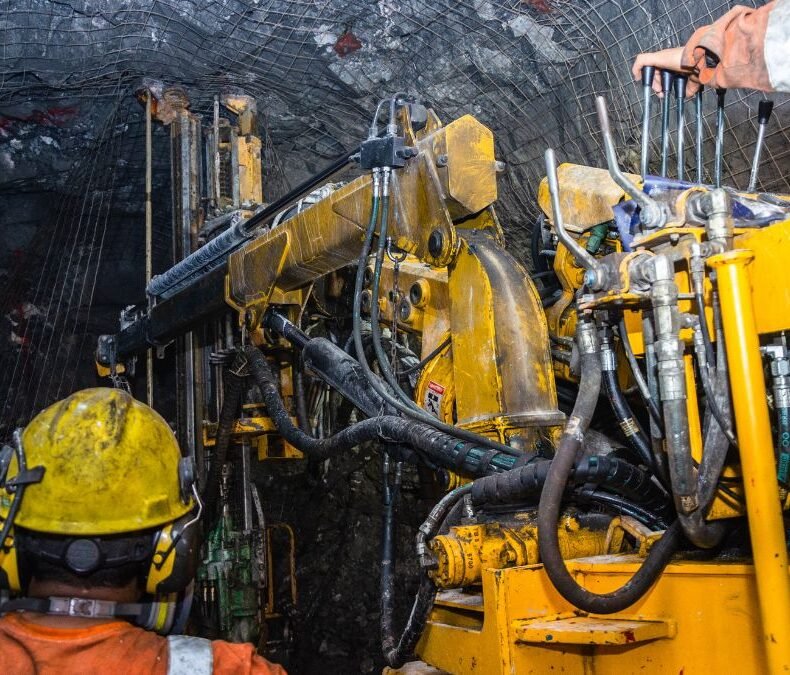Industrial mining equipment is shrouded in mystery, but finding answers will open the floodgates to greater efficiency and increased safety. The mining industry’s valves, ubiquitous pressure pipes, and gigantic machines—all powered by the latest technology. Are you curious about these images? If so, here we help with that.
This article focuses on a journey through the world of industrial mining equipment. From its beginning as an innovation, the equipment has transformed mining into a new industry. Today, equipment enhances efficiency, makes mining safer, and simultaneously combats environmental problems.
The Changing Face of Mining Equipment
As we go through history, we will focus on the historical milestones that established the groundwork for today’s industrial mining equipment. The Industrial Revolution fundamentally changed the mining industry from hard labour to machinery.
One significant development was the invention of the steam-driven engine, which provided a basis for the mechanisation of mining processes. As technology continued to develop, machines that were driven by gears emerged, thereby further increasing the efficiency of mineral extraction.
Efficiency in Mining Operations
A power-driven age has exploded, and electric-powered equipment and automated systems have become common in the 20th century. These excellent tools have significantly changed the ancient workings of the modern mine. Mining today requires efficiency above all else. Industry mining equipment is essential in speeding extraction and upgrading material transport.
Large-scale excavators and bulldozers have become the backbone of current mining practices, allowing even vaster mineral resources to be extracted quickly. They have hydraulic systems driven by powerful motors to move colossal masses of earth and minerals at once.
Conveyor systems are another essential facet of efficient mining operations today. These wonders of automation carry materials from one place to another quickly and smoothly without any human labour, eliminating human error.
Systems of crushing and sorting machinery have also followed suit with significant advances. They are used to stuff soft foods through holes in the skin of large complex objects like rocks, or they can be turned down more promptly for subsequent work like the winding of a filament by rotation, which reduces drag force on premature banners at larger scales.
Guarantee Safety in Mines
Safety is the paramount concern in the mining industry. Over the years, industrial mining equipment has been designed in many countries to deal with various types of danger. One function of industrial mining equipment is to excavate and clear away debris. Hydraulic attachments can remove hazardous materials from excavators and mitigate potential hazards. Similarly, equipment tailored for waste management provides peace of mind for people working there and keeps the environment clean.
Ergonomic design has become increasingly important to the manufacturers of mining equipment. All machines aim to reduce accidents by integrating safety features and designing for operator comfort. They hope to lift performance as a whole. Further improvements in AI and remote sensing technology mean that new safety measures can be taken. These technologies monitor and recognise real-time dangers, allowing prompt countermeasures to minimise accidents in an environment fraught with danger.
Dealing with Environmental Problems
The mining industry doesn’t just pay attention to efficiency and safety; it also promotes environmental sustainability. Industrial mining equipment has been modified to reduce environmental impact and protect sensitive ecosystems. Sustainable mining equipment is a multifaceted concept that covers everything from waste management technologies to equipment manufacturing processes. To manage waste products safely and responsibly, effluent treatment systems and tailings disposal methods help reduce the environmental footprint associated with mining operations. Furthermore, mining methods are becoming more environmentally friendly. Techniques such as precision blasting and selective mining are less influential on the ecosystem.
The Future of Industrial Mining Equipment
The future of mining equipment is largely down to automation, with predictive maintenance and sustainable solutions also vying to shape its future. From a different angle, automation and robotics may ultimately change mining methods in a big way. Autonomous drilling and haulage systems will be efficient and require minimal human intervention in hazardous environments.
Predictive maintenance will transform the way we maintain equipment. Advanced sensors and data analysis are essential tools that help find potential failures or maintenance needs before they occur, decreasing downtime and lengthening equipment life.
With sustainability now on the global agenda, the uptake of renewable energy in mining equipment’s use is growing apace. By combining solar power, wind power, and energy storage systems, we can cut greenhouse gas emissions and make mine operations environmentally friendly.
In Summary
The mining industry cannot exist without industrial mining equipment, for it is this machinery that makes possible the extraction and handling of valuable minerals. In order to maintain truly profitable mining operations with their efficiencies maximised and their safety records without blemish, these are the essential merits. Mining companies can maximise their output and at the same time minimise hazards to human life in processing worthwhile gains by having the right equipment. They should also adopt efficient methods and take safety measures. To mould the future shape of industrial mining equipment, we must embrace technological progress and adopt a culture of constant improvement.



